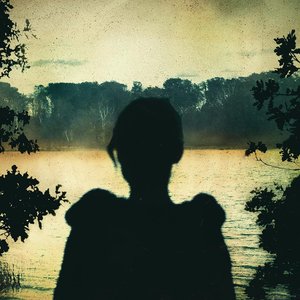Wiki
-
Release Date
2007
-
Length
12 tracks
On a trip in Jerusalem, Rodriguez-Lopez purchased an archaic ouija-type talking board at a curio shop as a gift for Bixler-Zavala. They would return to their tour bus after shows to play with it during their 2006 tour with the Red Hot Chili Peppers, as it quickly became the band's post-show ritual. Dubbed "The Soothsayer", the board revealed stories, gave names and made demands, as the band was contacted by three different people who appeared in the form of one, who was then referred to as "Goliath". The more the band had interacted with "The Soothsayer", otherworldly coincidences began plaguing the band's experience writing and recording The Bedlam in Goliath: Blake Flemming—their current drummer at the time—had quit mid-tour and left the band with financial troubles; Bixler-Zavala wound up needing surgery performed on his foot due to the shoes he had been wearing, forcing him to relearn how to walk post-surgery; audio tracks sporadically and literally disappeared off the screens; Rodriguez-Lopez's home studio flooded and had been subject to multiple power outages; and the album's original engineer had gone through a nervous breakdown, leaving behind all previous work with no notes as to where anything was. The engineer who quit stated to Rodriguez-Lopez: "I'm not going to help you make this record. You're trying to do something very bad with this record, you're trying to make me crazy and you're trying to make people crazy."
Rodriguez-Lopez was nearly on the brink of starting over from scratch, but instead kept on with the recruitment of Robert Carranza as the replacement engineer, along with assistance from Lars Stalfors and Isaiah Abolin. Midway through the recording sessions, Rodriguez-Lopez broke "The Soothsayer" in half and buried it in an undisclosed location as an attempt to undo the curse and halt the unforeseen tragedies, who ended the ordeal by swearing never to give away the whereabouts of its burial, and also asking the band not to speak of it again during the remainder of the album's production.
The song "Soothsayer" contains field recordings that Omar recorded in Jerusalem. The recordings are a mixture from the Jewish quarter, the Muslim Quarter and the Christian Quarter
Recorded and mixed at Ocean Way Studios in Hollywood and Rodriguez-Lopez's home studio in Brooklyn, New York, song material for The Bedlam in Goliath dates back to April 2006 when demos were first written. Without a stable studio drummer after the three consecutive losses of Jon Theodore, Blake Fleming and Deantoni Parks in a single year, the band was introduced to the 24-year-old Thomas Pridgen, whose youthful presence—as described by Bixler-Zavala—had given The Mars Volta new life. Rodriguez-Lopez worked with Rich Costey to finish the album in a three-week stretch, assisted by Shawn Michael Sullivan and Claudius Mittendorfer as editors.
In an interview, Carranza described the recording process for The Bedlam in Goliath stating that no more than three takes an hour were recorded, as a way to soak in what was recorded and to hear the differences, which in turn improved the general mood and atmosphere of the album's creation. Elaborating on the method, Carranza stated that "when van Gogh was around he wasn't just painting, painting, painting. I'm sure he took a step back once in a while. You should do the same when you're recording."
Eventually the band decided in favor of Wax Simulacra as the first single:
“ Originally, the label wanted to introduce the LP with the track "Goliath," but the band wouldn't have it.
" 'Goliath' is about nine, 10 minutes long, and the end of it is so interesting, we didn't really want it to be used as a single," said. "It kept getting butchered and came off really bad.
Bixler-Zavala incorporated themes and names into the lyrics that were taken from messages given by "The Soothsayer", also including excerpts from poems that were found attached to the ouija, describing a love triangle between a woman, her daughter and a man. Each song reinterprets the relationship in some shape or form, and as a good luck charm to counteract the cryptic themes, Bixler-Zavala incorporated elements of the Afro-Caribbean religious tradition Santería into the lyrics as a "protective skin" to protect the band.
The album ultimately serves as an attempt to artistically reverse their perceived bad luck by "setting traps" for the listeners to use as a way to undo what "The Soothsayer" had brought upon the band. To aid the concept, vinyl editions of the album contain the band's own version of the ouija inside the gatefold.
Album descriptions on Last.fm are editable by everyone. Feel free to contribute!
All user-contributed text on this page is available under the Creative Commons Attribution-ShareAlike License; additional terms may apply.












